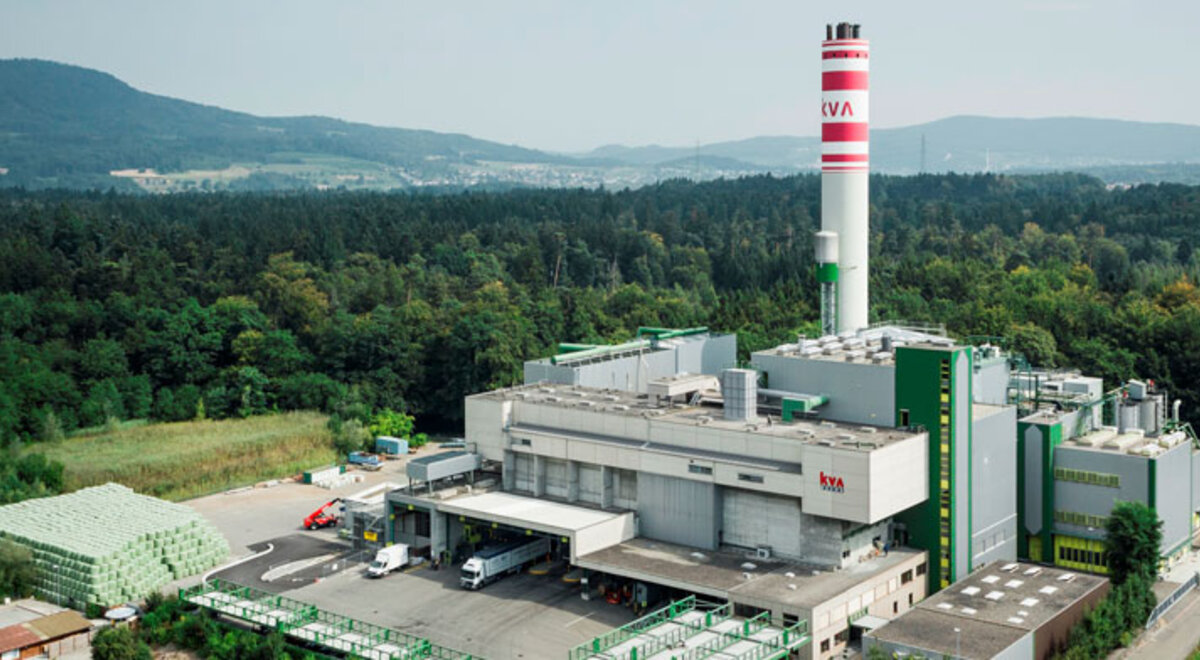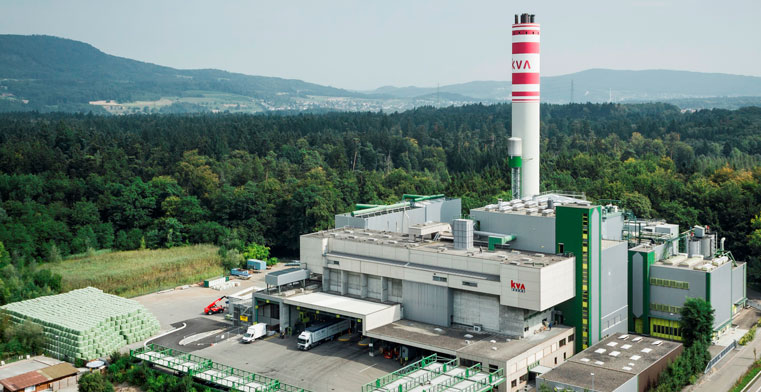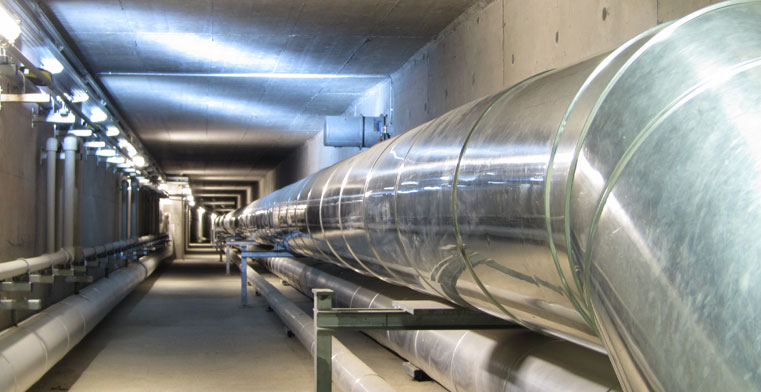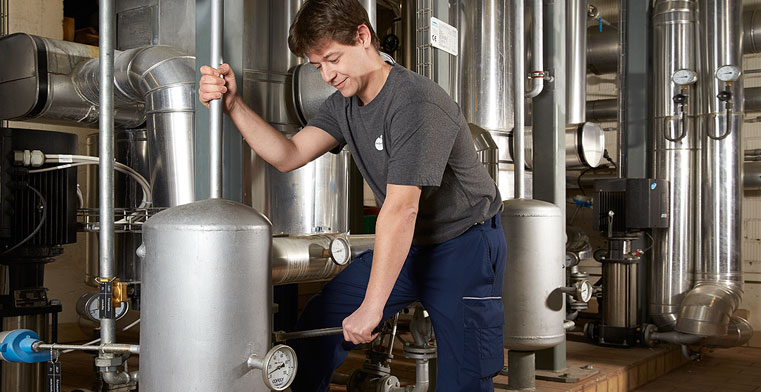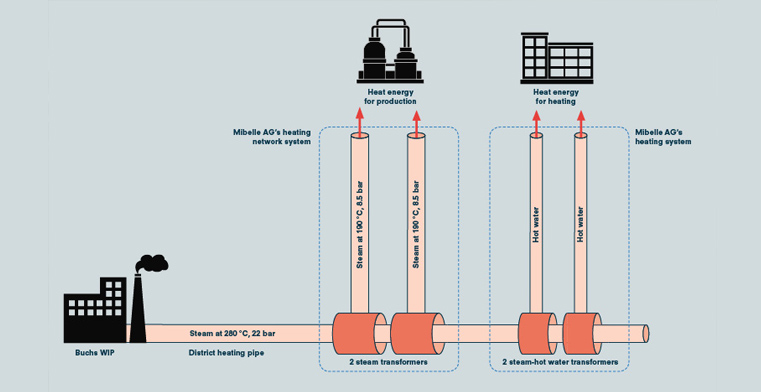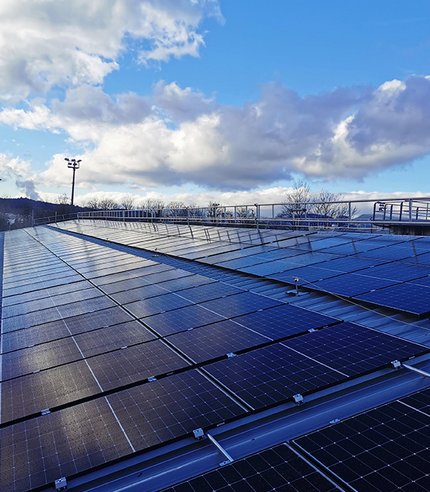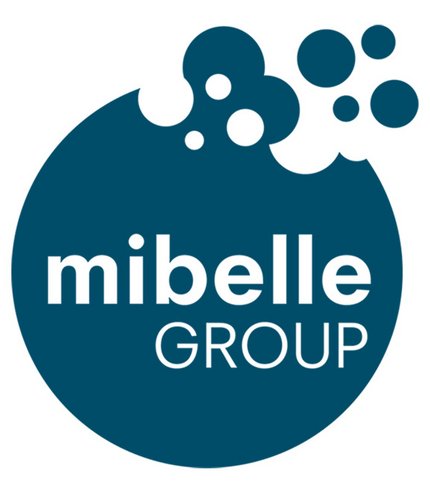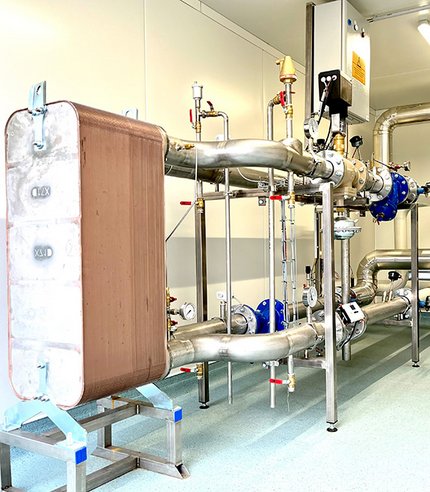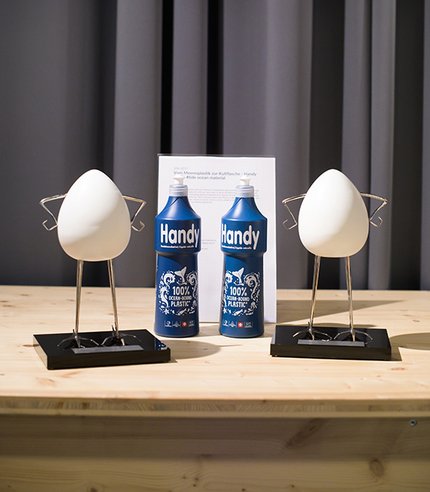If a country is particularly strong economically, it has a high standard of living and concomitant strong demand for consumer goods. Many consumer goods ultimately lead to a lot of waste, which also applies to Switzerland: it is among the European leaders in terms of waste volumes, at more than 700 kilograms per capita per annum. Switzerland also leads in waste recycling and separation, but around half remains as non-recyclable waste. In order to protect the environment, it is no longer permissible to send this non-recyclable waste to landfill, as in the past. Instead, this half of the waste is incinerated in special waste incineration plants (WIP), of which there are around 30 in Switzerland. Consequently something good comes of it, as the incineration process generates energy, which can be used as heat or electricity.
At Mibelle Group’s site in Buchs, all the energy for heating is obtained from the nearby Buchs WIP. This WIP also supplies Mibelle Group’s neighbours, such as Chocolat Frey and the local swimming pool, with heat. Thomas Aliverti, head of Infrastructure, Energy & Construction describes the initial situation: “Our location here is a spot of luck. We have been using district heat for more than 30 years. Before that we had oil tanks. Nowadays one would perhaps turn to gas, or heating from wood pellets. There are also businesses that still have an emergency oil tank.”
Using thermal energy
The Buchs WIP supplies district heating to the Mibelle Group on a scale of 900,000 kWh in total per year; energy on this scale could heat more than 1,500 average, 2-person apartments (78 sq. m.).
Aliverti sets out the technical details, explaining: “The district heating network is a closed system, in which very hot vapour (280 degrees) flows at very high pressure (22 bar). Here we have a top-of-the range network, around two metres in diameter, which is even accessible on foot. We have linked four, independent closed systems to this district heating system, to transfer the energy: two steam transformers for production and two steam-hot water transformers for heating.”
Mibelle Production therefore virtually has two small, separate district heating networks, through which steam at 190 degrees flows at 8.5 bar pressure. These heating networks are linked to the machinery which heats the oils or fats for homogenising creams and lotions, for example. The remaining energy is used to heat the building.
The advantages of district heating
In addition to a very high level of reliability, district heating from Buchs WIP provides the Mibelle Group with clear ecological advantages. Overall, waste is currently regarded as an energy source which can only grow in importance for ecological reasons, as waste incineration replaces fossil fuels like oil, coal and gas.
In terms of the calorific value, waste attains around the same level as brown coal. The climate impact is much less though, as waste emits much less CO2 per unit of energy than coal or oil. Half of the waste at Buchs WIP consists of material such as card, paper and wood, which is rated as climate neutral when incinerated. Overall this ensures a relatively small carbon footprint and therefore contributes to the Mibelle Group’s environmentally friendly business.

